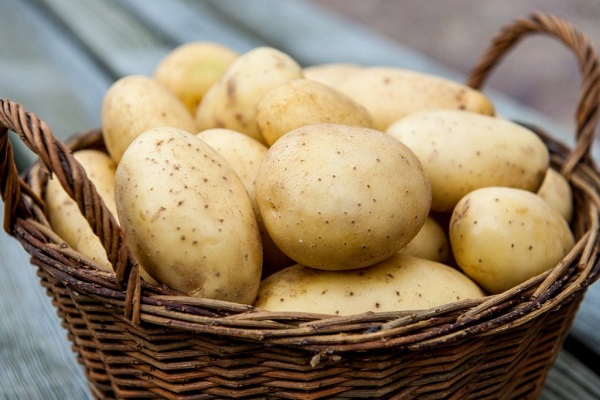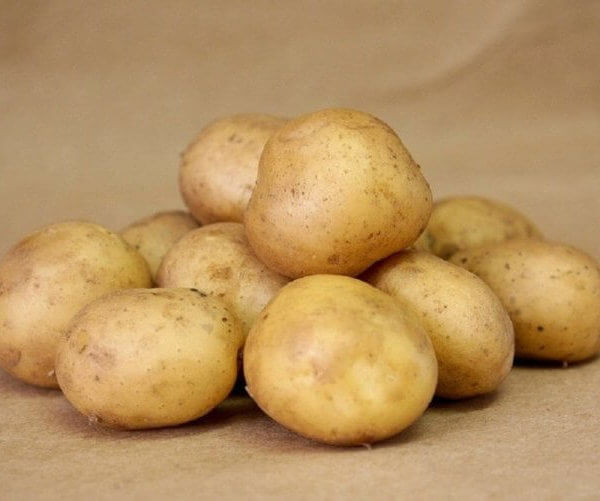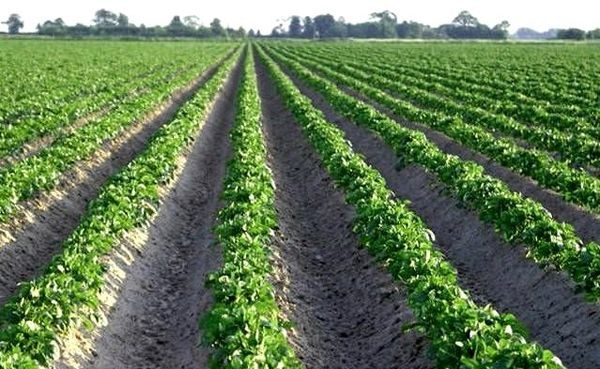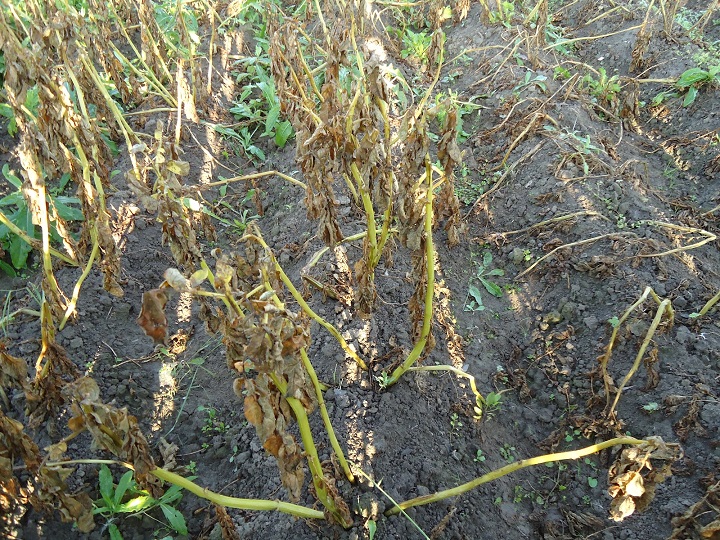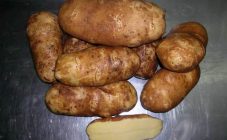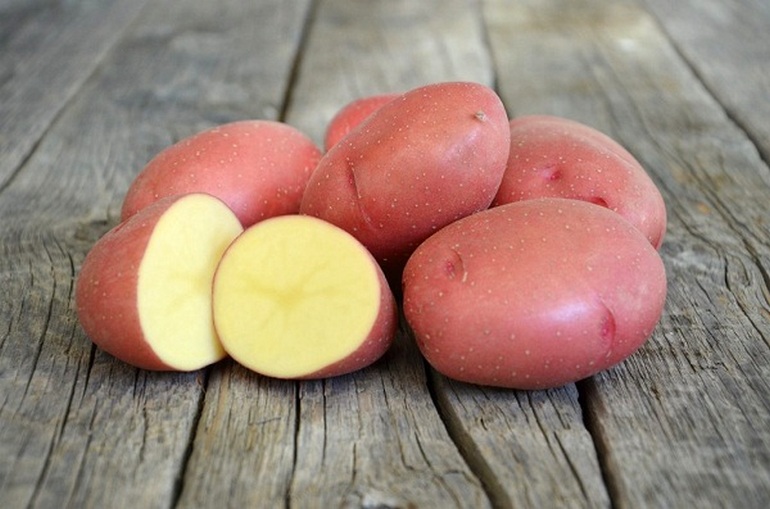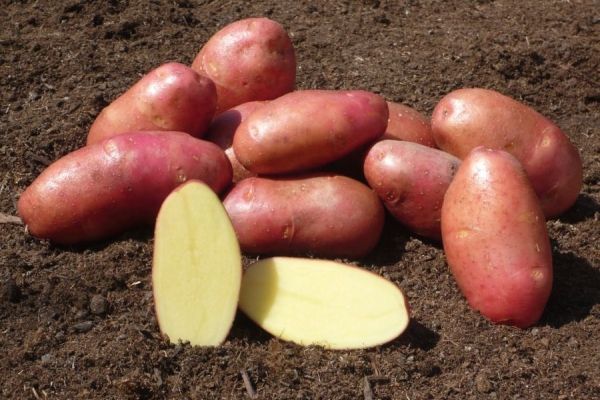Content:
The well-known varietal potato with yellow tubers called Kolobok is highly valued by Russian farmers for its attractive appearance and excellent taste. For this reason, familiarization with its features and agrotechnical characteristics is of particular interest.
History
Potato Kolobok is the result of long-term research of Russian breeders from the V.N. A.G. Lorkha. (in the State Register of the country, Russia was registered in 2005). In accordance with this document, the specified variety is recommended for cultivation in the Central agricultural regions. However, good results were obtained in other climatic zones of the country with similar natural conditions.
This potato species belongs to table crops with an average final ripening period. The harvest time for this variety comes in about 80-90 days, counting from the moment the pre-prepared tubers are planted.
In addition, the seed potato Kolobok has excellent culinary properties, namely:
- It cooks quickly and neatly, keeping its original shape well.
- Over time, this variety does not darken at all and does not change its inherent color range.
- Contains a significant percentage of proteins and carotene.
In addition, this garden product stands out among similar crops with high yields (subject to the rules of post-sowing care). Its seed material is characterized by good germination, in addition, it is resistant to such an unpleasant phenomenon as degeneration.
Description of the variety
When considering the appearance of Kolobok potatoes with a description of the variety of which can be found in this section, the following characteristics are especially highlighted:
- Potato tubers have a rough yellow skin.
- On the skin of potatoes, a few eyes of medium size and depth are clearly visible.
- The shape of potato tubers is strictly oval, and does not have well-defined irregularities (this property is especially attractive to potato growers).
- The average weight of one potato sample is rarely less than 115-120 grams.
Under ideal growing conditions, some hobbyists manage to get potatoes weighing up to 140 grams. At the same time, the pulp has a light yellow hue, it contains carotenoids, a certain amount of proteins, and amino acids.
Such a characteristic as the starch content in the fruits of this potato variety averages 12-13 percent. The bushes are distinguished by straightness of growth and increased resistance to deforming loads, the stems are not very tall and spreading.
The leaves growing on them are medium and large in size, have a light green tint with clearly distinguishable small veins. At the edges of the leaf plates, a slight waviness is observed, the white inflorescences blooming during the flowering period are collected in corollas of a relatively large size.
It is possible to get a good harvest of varietal potatoes (from 1 hectare, some amateur gardeners manage to collect up to 47-60 tons per season) due to the large number of tubers in one nest. They often grow up to 14-16 pieces of potatoes, which after harvesting retain their condition for a long time and rarely deteriorate.
Unlike many known types of vegetable crops, this variety does not show a significant decrease in yield if it is regularly planted in the same place for several years.
According to statistics, the maximum indicator for the useful yield of this vegetable garden is somewhere between 96-97 percent, which allows it to be grown for commercial purposes.
The ready-to-eat product is used for public sale or is used for the manufacture of semi-finished products. In the second case, it is used in casseroles, when deep-fried, as well as for dressing first courses and stuffing. Good chefs manage to make the following end products from it:
- Excellent vegetable mixes, the quality of which is rated at the highest level.
- Delicacies frozen in slices.
- Chips and baby purees.
The relatively low starch content in ready-made vegetables allows them to be used in the preparation of dietary meals.
Agrotechnics
Preparation and transfer to the ground
This potato variety adapts well to a wide variety of soils, but adapts best to light soils. Before planting, you will need to select undamaged medium-sized tubers.
Before planting, pre-sorted tuberous blanks are germinated in the light to a state until shoots with a length of about 2-3 cm appear.
The site on which this type of potato is planted should be prepared in advance: since the fall, it has been carefully dug up and fertilized. With the arrival of spring, it is enough to dig up the beds again and clear them of weeds, then add phosphorus and potash fertilizers to the loose soil.
To speed up the ripening process, it is enough to follow these simple rules:
- Before planting the prepared material, you must wait until the soil at a planting depth (10-12 cm) warms up to at least + 8 degrees.
- In time, these procedures should be tied to the first half of May, when the eyes of the blanks begin to germinate a little.
- The soil prepared for planting should be moderately moist.
- The planting itself is carried out in rows located along the linear north-south axis, which will provide future plants with acceptable sunlight.
- When groundwater is located close to the ground, planting should be done in beds, somewhat elevated above ground level.
- The gap left between the rows should allow you to easily care for the growing bushes (for this, it is taken equal to at least 60 cm).
- The step of planting potato nests is usually about 30-35 cm.
When carrying out planting work, a small handful of ash and about the same amount of compost or humus should be poured into each hole. Some potato growers replace them with a mixture of organic fertilizers applied at the rate of about 20 grams per nest.
Features of care and collection
Caring for a potato of this variety is reduced to its hilling, feeding and abundant watering, organized during the formation of ovaries. Loosening of the soil should be done three times during the growing season, namely:
- First, when the height of the bushes reaches 25 cm.
- The second time they spud in about 2-3 weeks.
- Another loosening is organized about 24 days before harvest.
At the end of the flowering period, watering the potatoes is undesirable, since an abundance of moisture can threaten the disease late blight. During the entire growing season, 2-3 feeding of the nests of the growing plant is also carried out using potassium supplements mixed with droppings or mullein.In order to avoid drying out of the soil during this period, another hilling is organized with simultaneous mulching.
A sign of the ripening of the tubers of a plant is the complete drying out of its stems, which, for the convenience of harvesting, are most often cut in the form of tops. After that, the potatoes are dug up and stacked in one row under a canopy to dry.
Advantages and disadvantages
The Kolobok variety has a number of advantages and advantages that are highly valued by both private owners and farm specialists. The positive qualities of yellow potatoes include:
- Its high yield and very pleasant taste.
- Outstanding commercial (or industrial) qualities.
- Low starch content.
- Almost the same size of tubers.
- Unpretentiousness when growing and caring for.
- Insensitivity to prolonged germination in the same place.
- Immunity to most garden pests and diseases.
- Excellent keeping quality and good transportability.
The disadvantages of this potato variety include increased sensitivity to the quality and variety of dressings and the need to maintain a given level of soil moisture. Some users do not like its too dense rind, which significantly complicates the process of cleaning the tubers.
Potatoes with the culinary name Kolobok are considered a promising and high-yielding species, quite suitable for commercial cultivation. Most users appreciate it for the neat appearance of yellow tubers, as well as for its immunity to diseases of various kinds and its unique taste.
